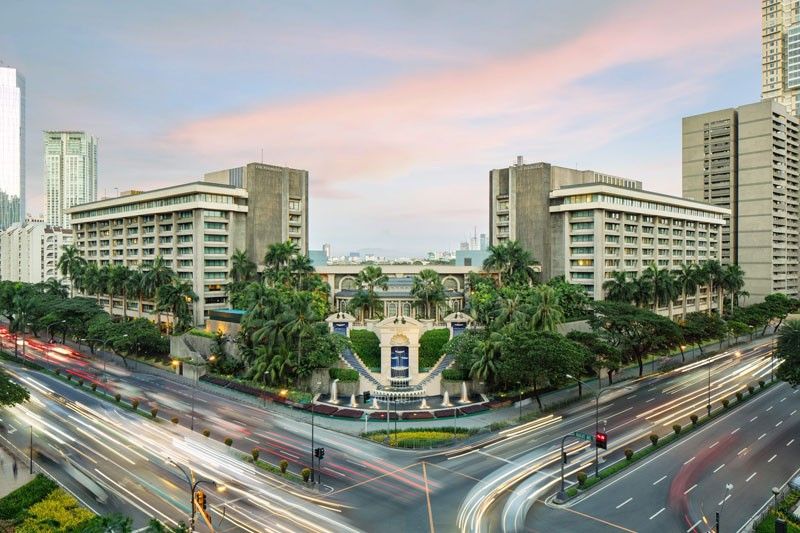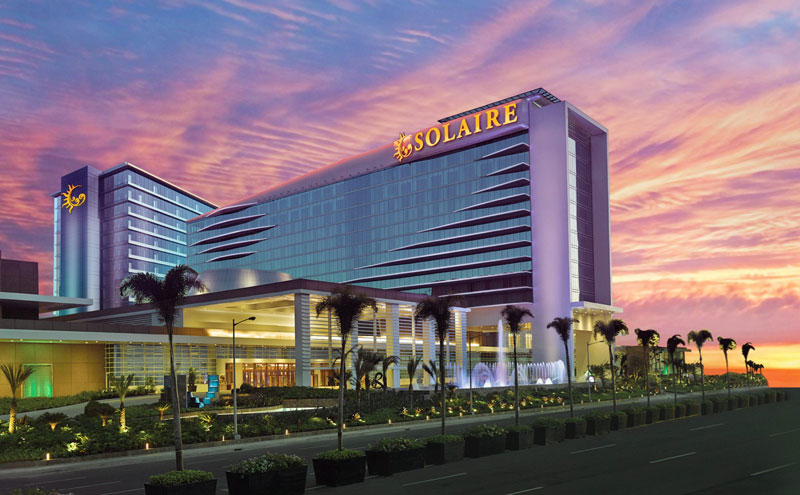Why Manila’s luxury properties are topping ‘Forbes Travel Guide’

We’ve heard much about the Philippines’ sustained economic growth (averaging six-plus percent annually over the past decade) and the boost in tourism numbers (now at a record-setting 7.1 million foreign visitors). But Metro Manila’s hotels and properties are also getting international raves, most recently from Forbes Travel Guide, which rates the world’s best hotels, restaurants and spas.
You’ll recognize Forbes Travel Guide from its “five stars” logo at the upper right corner. Applying 900 service standards to various properties worldwide, Forbes Travel Guide bestows up to Five-Star ratings to only the best that offer “luxury” accommodations. The most recent recipient of Five Stars was The Peninsula Manila; others include Marco Polo, Nüwa Manila, and Sky Tower at Solaire Resort & Casino.
Before joining Forbes Travel Guide as CEO in 2018, Belgium native Filip Boyen served as CEO of Small Luxury Hotels of the World, where he oversaw a portfolio of more than 520 exceptional independent hotels in 80 countries.
We asked Boyen why the Philippines continues to rack up such impressive gains.
Business Life: What sort of unique experience does Manila offer as one of the top travel destinations in the Philippines?
Flip Boyen: Forbes Travel Guide was particularly excited to start rating hotels in Manila and showcase the capital of the Philippines to the luxury traveler. We now have 12 Star-Rated hotels across the city, and in themselves, they offer diversity in the type of experience a guest can choose to have. Add to that the rich culture and history of the city of Manila along with the varied high-quality tourism attractions, it’s a city that you can return to many times and never have the same exact experience twice.
One of the unique qualities is the Philippines’ rich and renowned hospitality culture. Filipinos are naturally hospitable with a warm and friendly nature. Filipinos also are known for their love and zest for life. They are always ready with a smile and enjoy singing and dancing, as it’s all part of their very colorful and vibrant culture.
Specifically, what did The Peninsula Manila do that lifted it from four to five stars?
In short, every team member at The Peninsula Manila worked very hard, driven by a great leadership team, helmed by the wonderful (Peninsula Manila GM) Mark Choon. More specifically, our data shows they made an increased performance in levels of guest comfort and convenience, as well as graciousness and personalized service. Examples of this would be basic gestures, such as using the guest name more naturally, to thinking ahead for the guest more frequently.
Can you talk about other Five-Star properties — Marco Polo, Nüwa Manila, Sky Tower at Solaire Resort & Casino — and what they offer that sets them apart?
While you will get a very similar sense of service in the properties, they are all varied in their physical elements, and this is why we see Manila competing now with long-known top destinations in Europe, the Middle East and the United States. You can see wonderful attention to modern architecture at Marco Polo Ortigas Manila, built just a few years ago in 2014. That’s quite the juxtaposition from The Peninsula Manila, which has been around for decades and is a classically elegant luxury property. You then can move out of the business district to the bay and stay at Sky Tower at Solaire Resort & Casino and experience the thrill of a gaming resort, yet in the exclusion of a private hotel.

Forbes Travel Guide CEO Filip Boyen
What are the luxury trends here in the Philippines, and how do they differ from regular traveler/tourism priorities?
We have seen the rise of integrated resorts, including City of Dreams Manila, Solaire Resort & Casino, Okada Manila and Resorts World Manila. They have added excellent entertainment that varies from Solaire’s Broadway shows, to Okada’s largest multicolor dancing water fountain in the world, to COD’s kids play zone. Entertainment City, where all integrated resorts are located, is just 15 minutes from the airport, which makes it easy for travelers.
Why the year-on-year growth in Forbes’ Five-Star facilities in Manila?
We launched Manila in 2017 with one Five-Star hotel, Sky Tower at Solaire Resort & Casino. The following year came the much-anticipated Nüwa Manila from Lawrence Ho’s tremendously accomplished team. And now we see The Peninsula Manila earn its Five-Star award for 2019.
With the excitement behind the opening of Okada Manila, we have our eyes closely on the continued growth of service levels in the city. There is a healthy competition among hoteliers where they challenge each other to build more thoughtfully and think bigger and more creatively when it comes to the guest experience than ever before. Hotels now recognize becoming a Five-Star winner is a marathon, not a sprint. Many of these hotels worked for years on their service delivery before even opening.
You’ve said the job of Forbes Travel Guide is to “verify luxury.” You place a premium on service standards. Is this somewhat harder to quantify?
We see our mission twofold: to verify luxury and help de-clutter the noise around the definition of a luxury guest experience, and — of equal importance — to champion and support the hospitality community. Through our ability to mentor and assist where we can, we play a part in the development of the next generation of hoteliers, who ultimately become the future leaders of hospitality.
You have 900 standards to inspect for each property. What are these ultimately based on, and how did you arrive at this pinnacle?
The 900 standards are spread over our hotel, fine dining and spa evaluations — each of which can earn a dedicated star rating in its own right. Over all three verticals, we define a series of service and facility standards that equate to the ultimate guest experience. Our standards are not crafted in such a way that we dictate exactly how a property should execute its service; rather, we strive to not homogenize service and award credit when we see staff using intuition and reacting in a very personalized manner to each guest.
Recognizing it is appropriate to leave a guest alone to sit and enjoy a quiet drink, while discreetly making sure he is cared for from a distance is as important as knowing how to engage in the art of great conversation. This is what Forbes Travel Guide is looking for, the sense of knowing you are an individual and not simply lost in the crowd, to feel cared for.
Is there always room for new innovation or improvement? Will we ever see a “Six-Star Award”?
There is no such award as a Six-Star. Our criteria are already extremely hard to achieve consistently and there is no need for an additional award category. The required score to achieve a Five-Star hotel award is 90 percent.
We monitor global data year over year to make sure our required entry scores for all our awards remain in line with how hotels, restaurants and spas are performing. We have in the past had slightly lower entry requirements as well as higher—the economy can have an impact in this, but right now our data shows us that 90 percent remains the correct benchmark.
Who is the avid consumer of Forbes Travel Guide? The luxury market? Business travelers? Can you define your market?
Our market is the affluent traveler, their professional travel advisers as well as the traveler who appreciates the best service, even if that means they will travel less frequently. In a time when the amount of information a consumer or travel adviser is faced with to make good decisions and when we all seem to have less time than ever before to relax and enjoy life, the importance of where one stays, dines or spas becomes even more crucial — and this is where Forbes Travel Guide comes in. We stay in all the properties we have on our list, year over year, and our awards are unbiased, objective and supported by real data, not personal opinion.

Marco Polo in Ortigas, Nu?wa Manila at City of Dreams and Sky Tower at Solaire Resort & Casino have also received Five-Star ratings from Forbes Travel Guide in previous years.
What’s the overall climate for tourism in the Philippines? How does it match against Southeast Asian competition now?
The Philippines has had a decade of plus-six percent GDP year-on-year growth, making it one of the top countries in the world in terms of growth along with Vietnam and Mongolia. Foreign investment and confidence has allowed industries and business to flourish, supporting a growing middle class and strong domestic consumption.
The Philippines stands strong to benefit from trade war, as inter-Asia companies invest in the Philippines for its educated, available and affordable labor, complemented with the warm hospitality spirit of its people. Plus, a growing domestic middle class boosts GDP through real estate, demand for services, experienced and overall consumption.
How can the Philippines sustain that upward growth?
The Philippines can continue investing in people, through service and enhance its global reputation as one of the great service-oriented countries. It also can bring back experienced Filipinos from overseas through opportunities and competitive pay. So many Filipinos go overseas for better pay and career opportunity, and most of those are in either hospitality or foreign domestic work. With a growing middle class, many can return to their country to seek opportunity and reunite with family while making similar pay.
Plus, the country can focus on what it does best, and that’s the warm, gracious nature of Philippines hospitality
What are the continuing challenges to that growth?
The continuing challenges to that growth include having realistic expectations, for example, have the expectation of six percent GDP year over year, for extended period.
Competition also will play a role. As more big players tap into the Philippines market and open more hotels, it will be a competitive environment for quality workers. The country needs to continue investing and educating workers in hospitality.
Other factors include upward mobility for middle class, driving up rates despite oversupply, infrastructure investment and a more international route, and overall tourism safety.
Government “bad news” (whether terrorism, drug war, corruption, peace and order concerns) has long plagued the Philippines. Why are these Five-star facilities immune to bad news?
Every country has its geopolitical challenges — Thailand with coups and elections, India with elections, China with trade war, Hong Kong with democracy strikes, etc. — but tourism continues to grow.
Travelers are seeking new, unique and engaging experiences. They travel to countries that make them feel welcome, with rich culture, food and entertainment programming. Geopolitical “bad news,” although a shadow, will not affect the long-term viability of tourism in a wonderful, diverse country like Philippines with its incredibly hospitable people, rich culture, endless travel experiences and beautiful destinations both beach and city, for travelers to explore.



















